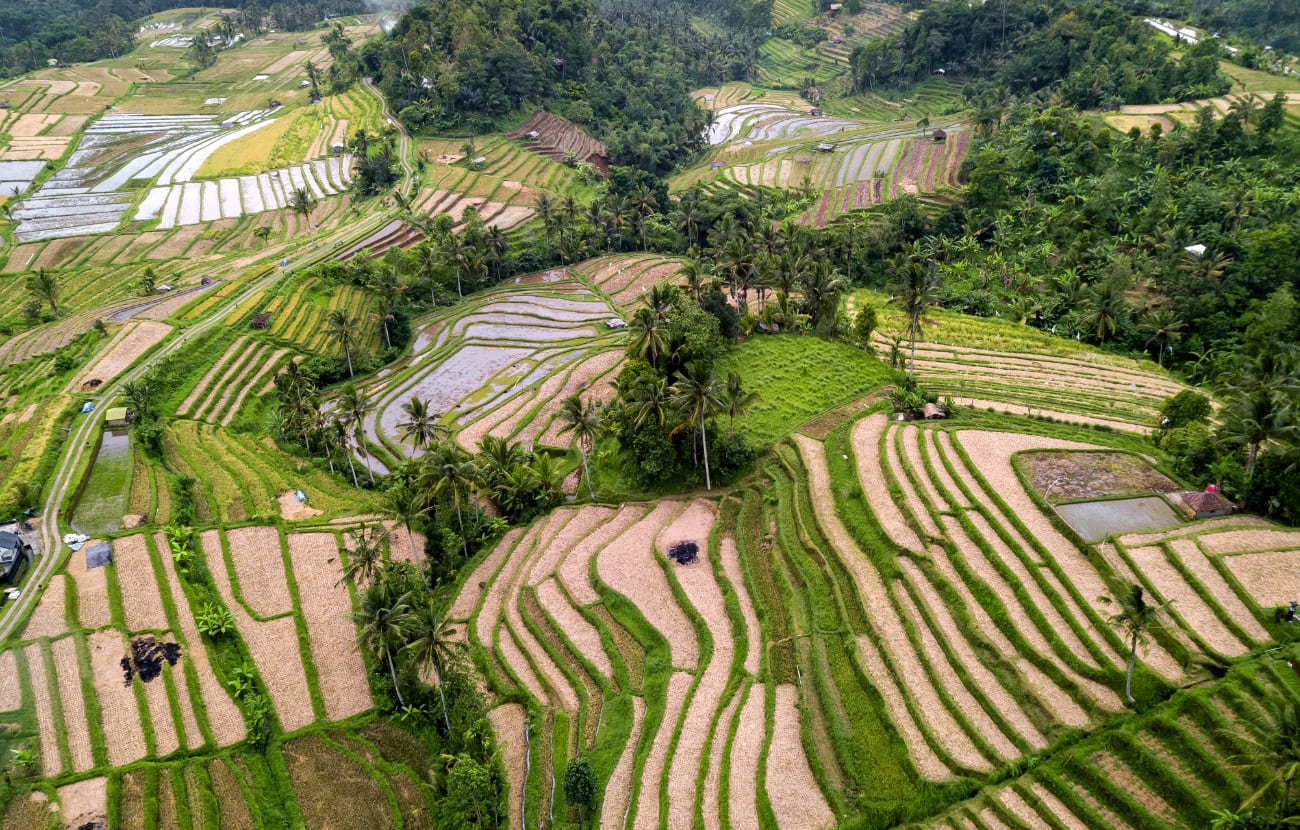Amidst Bali’s lush, terraced landscapes, a remarkable system of water management has sustained the island’s rice paddies for over a thousand years. This intricate network, known as Subak, is far more than just an irrigation system; it is a profound cultural landscape, a testament to communal cooperation, and a living embodiment of the Balinese philosophical concept of Tri Hita Karana. Recognized by UNESCO as a World Heritage site, Subak offers a unique insight into how the Balinese people have harmonized their agricultural practices with their spiritual beliefs and social structures.
A Masterpiece of Hydraulic Engineering and Community Governance
At its core, Subak is a democratic and self-governing system of water distribution for rice cultivation. It comprises a complex network of canals, tunnels, weirs, and dams that divert water from rivers and springs, channeling it through terraced rice fields. What makes Subak truly extraordinary is not just its engineering prowess, but its communal and spiritual governance.
Each Subak organization is an independent, self-regulating body of farmers who collectively manage the water resources. Decisions regarding planting schedules, water allocation, and maintenance are made through consensus, ensuring equitable distribution and preventing conflicts. This cooperative spirit is deeply ingrained in Balinese society and is a cornerstone of the Subak system.
Tri Hita Karana: The Guiding Philosophy
The operational principles of Subak are inextricably linked to the Balinese philosophy of Tri Hita Karana, which emphasizes the harmonious relationship between three elements:
- Parhyangan (Harmony with God): The Subak system is centered around water temples (Pura Ulun Danu), where farmers offer prayers and rituals to Dewi Sri, the goddess of rice and fertility. These temples are not merely places of worship but also serve as the focal points for water management, with priests often determining planting cycles based on religious calendars and celestial observations. This spiritual dimension ensures that water, a sacred gift, is treated with reverence and managed responsibly.
- Pawongan (Harmony with People): The communal aspect of Subak fosters strong social bonds and cooperation among farmers. Through regular meetings and shared responsibilities, the community works together to maintain the irrigation infrastructure, resolve disputes, and ensure fair access to water. This collective effort strengthens the social fabric of the village.
- Palemahan (Harmony with Nature): Subak practices demonstrate a deep respect for the natural environment. The terraced rice paddies themselves are a form of ecological engineering, preventing erosion and maximizing water retention. The synchronized planting and harvesting cycles, often guided by the water temple priests, also help to control pests and diseases naturally, reducing the need for chemical interventions.
This holistic approach ensures that the Subak system is not only productive but also ecologically sustainable and socially cohesive.
The UNESCO World Heritage Recognition
In 2012, the “Cultural Landscape of Bali Province: the Subak System as a Manifestation of the Tri Hita Karana Philosophy” was inscribed as a UNESCO World Heritage site. This recognition highlights five key components that collectively represent the Subak system:
- Pura Ulun Danu Batur: The supreme water temple, located on the rim of Mount Batur, which is considered the ultimate source of water for many Subak systems.
- Lake Batur: The primary water source, a sacred crater lake.
- Subak Landscape of Catur Angga Batukaru: A representative area of terraced rice fields and water temples.
- Subak Landscape of Pakerisan Watershed: Another example of the intricate Subak network.
- Taman Ayun Temple: A royal water temple that showcases the historical and cultural significance of the system.
This inscription acknowledges the Subak system as an outstanding example of a living cultural tradition that has adapted to the challenges of modern times while retaining its ancient principles.
The Cycle of Rice: More Than Just Food
For the Balinese, rice is not just a staple food; it is a sacred gift from the gods, imbued with spiritual significance. The entire cycle of rice cultivation, from planting to harvest, is accompanied by elaborate ceremonies and rituals, reinforcing the spiritual connection to the land and its bounty. The terraced rice paddies, particularly those in Jatiluwih and Tegalalang, are not only agricultural marvels but also stunning landscapes that have become iconic symbols of Bali’s natural beauty.
Subak in the Modern Era
Today, the Subak system faces new challenges, including urbanization, tourism development, and climate change. However, its inherent resilience and the strong cultural identity of the Balinese people continue to ensure its survival. Many local communities and organizations are actively working to preserve and promote the Subak system, recognizing its ecological, cultural, and economic value.
For visitors, exploring the rice paddies and learning about the Subak system offers a profound appreciation for Bali’s unique cultural heritage. It’s a chance to witness a living tradition that beautifully demonstrates how humanity can thrive in harmony with nature and each other, guided by a deep spiritual understanding. The Subak system is a powerful reminder that sustainable living is not a new concept, but an ancient wisdom that continues to nourish both the land and the soul of Bali.

